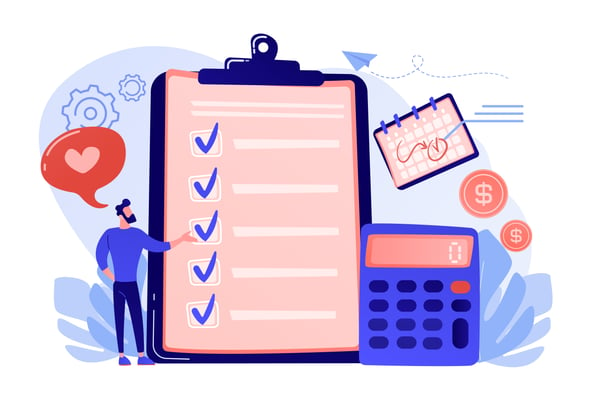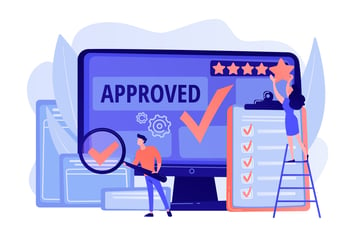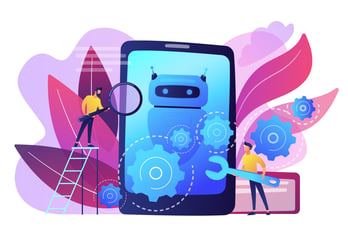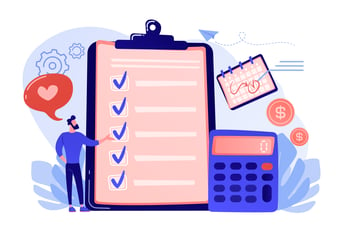Your Outsourcing Blueprint:
A comprehensive guide to outsourcing your Customer Service

Introduction
Outsourcing customer service has become an increasingly popular strategy for businesses of all sizes. By outsourcing customer service offshore, companies can benefit from lower labour costs, access to a wider pool of skilled workers, and around-the-clock coverage. However, outsourcing customer service is not without its challenges, and it's important to approach the process with a clear plan in place.
This guide will provide a comprehensive blueprint for outsourcing your customer service offshore, from identifying the best outsourcing destinations, to establishing clear goals and expectations, to managing and monitoring the performance of your outsourced customer service team. Whether you're a small business owner just starting to explore the world of outsourcing, or a seasoned professional looking to optimise your existing customer service outsourcing strategy, this guide will provide the information and tools you need to succeed.

Chapter 1: Introduction to Outsourcing Customer Services
What is outsourcing Customer Services
Outsourcing customer service refers to the practice of hiring a third-party company or individual to handle customer support inquiries, complaints or back-office support. This can be done either domestically or internationally, with the latter often referred to as offshore outsourcing. Companies may choose to outsource customer service for a variety of reasons, such as to reduce costs or access a larger pool of qualified customer service representatives.
Benefits and risks of outsourcing Customer Services
There are several potential benefits to outsourcing your customer service operation, including:
- Access to expertise: Outsourcing certain aspects of customer service to a specialist partner can help lower costs while maintaining quality. This collaboration can provide access to expertise and optimization of procedures, allowing a company to focus on other areas of the business. Outsourcing can also improve customer satisfaction through the use of a dedicated team of professionals, familiar with best practices, as well as streamlined processes optimised overtime.Another option is to outsource specific parts of the operation such as areas you’re struggling with ie; overnight coverage, specific language cover, back office tasks etc, rather than the entire operation.
- Cost-saving & budgeting: Lower employment costs combined with lower costs of living abroad, partnering with an offshore Customer Service provider can help you reduce costs by up to 50% (check out our cost comparison calculator here)
- Improved customer satisfaction: Outsourcing partners in customer service (CS) are often focused on improving customer satisfaction (CSAT) and can provide valuable recommendations for quick improvements, such as faster response times, expanded operating hours, effective training, staying current with modern communication channels and technologies, and using technology to enhance all aspects of the team.
- Better Flexibility and scalability: Outsourcing partners can help businesses scale their operations up or down more easily, as they have access to efficiencies at scale and design their workforce strategies with this flexibility in mind. Offshore outsourcing partners may also have the advantage of time-zone differences, which can allow them to provide services without requiring higher fees for off-hours.
- Access to modern technologies: Implementing the right technology can be the extra step that turns a team from mediocre to the best. And implementing it poorly can be really discouraging. We’ve all tried to contact customer service and been stuck in an endless loop of bots, with no real support. We’ll cover this area in more depth, later in this article.
It is also important to understand the risks of outsourcing your CS function. The main considerations of in-house support can be summarised by:
- Brand awareness: In-house customer service (CS) teams can more effectively represent a company's brand due to the close control over tone of voice and other factors.
- Team collaboration: In-house CS teams can be more closely integrated with the rest of the company, leading to improved communication and collaboration between departments.
- Policy changes: In-house call centres may be able to more quickly implement policy changes, compared to external agencies. This can be due to the longer time it may take for changes to be put into action with a third-party agent.
How to determine if outsourcing is right for your business
Deciding whether outsourcing customer service is right for your business will depend on a variety of factors, including your industry, the nature of your products or services, and the size and resources of your company. Careful consideration of the potential benefits and risks, as well as a clear understanding of your business needs and goals, can help you determine if outsourcing is a viable option for your company.
Suggested read: Click here to take a look at our comprehensive view on Outsourcing your Customer Services, vs in-house.

Chapter 2: Location, Location, Location
Choosing an offshore location
When it comes to offshore outsourcing, one of the most important decisions a company will make alongside choosing a partner, is choosing the right location. There are a number of factors to consider, including skill set, cost, language skills, cultural fit, and infrastructure. Some popular locations for offshore customer service include the Philippines, India, and Thailand.
The Philippines is known for its cost-effective labour, strong English skills, and cultural similarity to Western countries. India also has a large pool of skilled workers and a strong service industry, but there may be more language and cultural barriers to overcome. Thailand is another popular location due to its low cost of labour and well-developed infrastructure, but there may be concerns about language and cultural differences.
Ultimately, the best offshore location for a company will depend on its specific needs and goals. It's important to carefully research and compare different locations to ensure a good fit for the company and its customers. We’ve included a few metrics below, we encourage you to consider before settling for a specific location.
Metrics: rule of law, global freedom scores etc.
If you’re outsourcing your Customer Service labour offshore, it’s important to make sure you’re working in a country where businesses and its citizens abide by the law, have stable infrastructure and allow its people a high level of freedom and civil liberties. Before committing to any specific country, or letting potential partners tell you where’s best, make sure to use the following resources to give you a true understanding of these countries.
- The “Rule of Law” is a quantitative assessment tool that shows the extent to which countries adhere to the rule of law in practice. See details and a breakdown country, by country here
- The “Global Freedom Score” is an annual score representing the levels of political rights and civil liberties in each state and territory, on a scale from 1 to 100 Click here to check how your partners country ranks
- Internet speeds and reliability is likely going to be core to your operation in the digital age, so make sure to use this resource to check against the countries you potentially outsource too.
- Anti Slavery: Modern slavery is unfortunately for millions of people is still a thing. Make sure to research the country you're outsourcing too, to understand if it’s a problem there. If it is, make sure to approach your partner on this matter and use resources such as world population review to make sure you’re not contributing.
Top 3 by current market share
There are many great outsourcing locations, and it may differ depending on who you ask, and on your needs, i.e. language capabilities, time-zones, cost, etc. Although this list is on the current most popular, our favourite option isn’t on here, it’s a bit of a trade secret and definitely a hidden gem in terms of outsourcing. However, we’re happy to spill the beans and tell you more, click here to book a call with one of our experts.
- India without a doubt is currently the most popular solution for outsourcing customer service labour. Outsourcing customer service labour to India can offer a number of potential benefits for businesses. One of the main advantages is cost savings, as labour costs are generally lower in India than in many other countries. This can allow businesses to reduce their overall expenses, while still providing high-quality customer service. Outsourcing to India can also provide access to a highly educated and skilled workforce, as many customer service professionals in India are well-trained and fluent in multiple languages. In addition, India has a strong legal system and a stable political environment, which can provide businesses with a sense of security and predictability when outsourcing customer service functions.
However, there are also some potential downsides to outsourcing customer service labour to India. Communication can sometimes be a challenge, as cultural differences and time zone differences can make it difficult to coordinate with Indian colleagues. - Thailand has shot up the ranks in recent years, in terms of popularity and it’s no surprise. Like India, Thailand has a low cost of labour. In addition, Thailand has a large pool of skilled and educated workers who are able to provide high quality customer service. The country also has a strong infrastructure, making it easy for companies to set up and manage customer service operations there. The benefits of outsourcing to Thailand has encouraged some of the biggest names to outsource here, companies such as Microsoft, IBM and Wells Fargo However, there are also some potential downsides to outsourcing customer service to Thailand. For example, there may be language barriers or cultural differences that can make communication with customers more difficult.
- Philippines Due to the low cost of living in the Philippines, labour also shares these cost reductions. It’s also highly recognised for having a modern, well developed infrastructure, and skilled workforce. English is also a national language of the Philippines, a great option for Outsourcing telephone support.
Not the most common solution for Customer Service specifically, but Poland is a great option if you’re looking for more technical support, IT help desks are a great example as Poland complies with strict EU standards such as GDPR for IP protection and data security. The average salary at the time of writing is around £1,216 or $1475, further increasing the benefits Poland can provide your business.

Chapter 3: Finding the Right Outsourcing Partner
Determine and define your needs
Before choosing an outsourcing partner for customer service, it's essential to understand your business's specific needs. Consider the type of support required (such as inbound calls, live chat, email, technical support, back office, admin etc.), the volume and complexity of customer inquiries, and the preferred channels of communication. Assess your current customer satisfaction levels and identify areas for improvement. Also, consider your target audience's language preferences. By understanding these factors, you can select a partner that can effectively meet your business's needs and improve the customer experience.
Researching potential outsourcing partners
Once you’ve defined your customer service needs, you need to find a partner that can deliver them. Research companies that specialise in providing excellent customer service support and have a successful track record in your industry. Start by doing an online search and asking for recommendations from other businesses where possible. Thoroughly research each company by looking for reviews and testimonials, and reach out to learn more about their services, pricing, technical abilities, do they offer any extras such as agent support software, or services to improve your public image on review sites etc, and finally make sure to understand contract terms. By researching potential partners, you can make an informed decision on the best fit for your business.

Pricing structures
The cost to outsource your Customer Service department can vary drastically, mostly depending on location, but many partners will have additional add-ons such as software, onboarding, shrinkage, additional languages, out of hours cover, etc. Some offer an all in cost, per hour or month, and others will charge depending on contacts worked.
We’ll use our solution Resolvable, to give you an understanding of the pricing structures you’ll find in the market.
We at Resolvable offer two solutions;
1) Dedicated Teams: which work well for businesses who know how many agents they need, and want full control over their workload, e.g. customer contacts, back office tasks, reporting etc.
This solution offers an all inclusive hourly rate of £8.45 per hour, this includes your dedicated agent/s full support structure, hardware, software, shrinkage and no additional charges for out of hour support.
2) Shared Teams: work well for businesses who don’t have a constant amount of customer service work, but still want to be available to over a long period of time
This solution: is available from £299 a month, or £0.80 per contact. View our pricing page to see more!
We’ve also built a cost comparison tool, that allows you to calculate your internal costs vs the costs of outsourcing with Resolvable. Click here to take a look
If you’d like to review our more detailed guide on Chapter 3: Finding the right outsourcing partner, check out our comprehensive article here; How to Choose the Right Customer Service Outsourcing Partner

Chapter 4: Training and Managing Your Offshore Team
Developing a training program for your offshore team
Developing a training program for your offshore team is an important aspect of managing a successful offshore team. A comprehensive training program should cover all the necessary skills and knowledge that the team members need to perform their job tasks effectively. It should also include information about the company's policies and procedures, as well as any industry-specific regulations that the team needs to be aware of. It is important to regularly review and update the training program to ensure that it remains relevant and effective. Additionally, it is important to provide ongoing training and support to team members to help them continually improve and develop their skills.
Make sure to use a knowledge base which can be updated live, and prompt notifications to agents on new process changes. Your outsource partner should have their own L&D (Learning and Development) team, so work with them to agree on a collaborative way to update training material, and ensure ongoing development.
Managing and communicating with your offshore team
Managing and communicating with your offshore team effectively is crucial for the success of the team and the overall project. Here are some tips for managing and communicating with your offshore team:
- Establish clear expectations and goals: Make sure that your team members know exactly what is expected of them and how their work fits into the larger project goals.
- Set up regular check-ins: Schedule regular meetings or calls with your team to discuss progress, address any issues, and provide feedback.
- Use communication tools effectively: Utilise tools such as video conferencing, messaging platforms, and project management software to facilitate effective communication and collaboration with your offshore team.
- Foster a culture of transparency: Encourage open and honest communication within the team, and make sure that team members feel comfortable raising concerns or problems.
- Be responsive and available: Make sure that you are easily accessible to your team and that you respond promptly to any questions or issues that arise.
By following these tips, you can effectively manage and communicate with your offshore team and ensure the success of your project.
Chapter 5: Quality and Customer Satisfaction
Quality assurance (QA) in customer service refers to the evaluation of the quality of interactions that customers have with a company. This includes assessing the standard of interactions through various channels such as phone calls, emails, and in-person encounters. QA in customer service aims to evaluate the effectiveness and efficiency of the processes involved, as well as the competence, expertise, and professionalism of customer service representatives. It involves verifying that customer service meets certain standards and expectations set by the company to ensure customer satisfaction.
Setting quality standards and metrics
Setting quality standards and metrics is a crucial step in ensuring that your offshore customer service team provides high-quality service to your customers. Quality standards provide a clear set of expectations for how customer service should be conducted, and metrics allow you to measure performance against these expectations.
When setting quality standards, it's important to involve your partner in this process, this may be alongside their L&D team, or maybe you want to take full control, and set these standards alongside the frontline agents. This will help ensure that the standards are realistic and achievable, and that your team understands the importance of meeting these standards. Additionally, involving your team in the process can help to build buy-in and ownership for the standards.
When defining the quality standards, you should consider the following factors:
- Communication skills: including verbal communication, listening skills, and the use of appropriate language.
- Technical knowledge: product or service knowledge and troubleshooting skills.
- Professionalism: including politeness, efficiency, and empathy.
- Compliance: adherence to company policies, procedures and industry regulations.
Once you have established your quality standards, you should set metrics to measure performance against these standards. Metrics should be specific, measurable, and achievable, and should align with the overall goals of your customer service team.

Examples of metrics that you may use to measure performance include:
- First Call Resolution rate (FCR): the percentage of customer issues that are resolved during the initial interaction
- Average handle time: the amount of time it takes to resolve a customer's issue
- Customer Satisfaction Score (CSAT): a measure of customer satisfaction
- Compliance rate: percentage of interactions that are conducted according to company policies, procedures and regulations
- Spelling and grammar: Ensuring quality spelling, grammar and sentence structure is important, and poor spelling can make a business look unprofessional.
It's important to regularly monitor and analyse the metrics and use the insights to improve the performance of the team and the customer service process. Also, have a process of feedback and training in place, especially when metrics are not meeting the standards.
Feedback and improving quality
Similar to the above, you can fully leave this to your partner, or be involved. We at Resolvable have some brands which prefer to leave both the conducting and feedback of our agents, to us, receiving a weekly report and breakdown instead. Other brands like to be involved.
The results of the QA process need to be gathered and added to other metrics, such as more performance based scores like Contacts per Hour (CPH), Quiz results, etc. and be reviewed with the agents. Ideally, this is during a weekly or bi-weekly one-to-one, It’s important to be clear on the expectations, how they’re performing and how their results are changing overtime and ensuring adequate coaching is available for those under performing.
Suggested Read: The Importance of Quality Assurance: A Look at Why It Matters

Chapter 6: Role of technology
Another great benefit of partnering with an outsourcing professional, is benefitting from the most modern technical solutions.
The integration of technology in the field of customer service has greatly impacted the way companies interact with their customers and colleagues. Advancements in technology have led to the creation of various tools such as chatbots, virtual assistants, self-service portals, social media platforms, and tools to collaborate with colleagues, such as Facebook's Workplace, or Microsoft's Teams, providing companies with multiple options to enhance the customer service experience.
We’ll examine the impact of technology on customer service, highlighting its benefits for both businesses and customers. We will also explore the different technologies used in this field, the significance of selecting the appropriate technology for a company and predictions on the future of technology in customer service.
Utilising Customer Service Software and Tools
Technology has brought numerous benefits to the Customer Service industry. From, Improved efficiency, greater convenience, enhanced personalisation, increased scalability and of course, reduced costs. Overall, technology has the potential to significantly improve the customer service experience, both for businesses and their customers. By leveraging the right technology, businesses can provide faster, more convenient, and more personalised service, all while reducing costs and improving efficiency.
There are numerous types of technology used in Customer Services, including:
- Chatbots and virtual assistants are computer-based systems that automate customer interactions. They can respond to simple inquiries and provide instant answers to customer questions. These tools are typically accessible through a website, application or messaging platform, and are commonly used as the first point of contact for customers seeking assistance.
- Self-service portals are digital platforms that enable customers to take control of their own assistance experience by finding solutions and answers independently. These can include features such as Knowledge bases, Frequently Asked Questions (FAQs), and forms for submitting support requests, allowing customers to quickly find answers without needing to reach out to customer service representatives.
- Customer Relationship Management (CRM) systems are software tools that assist businesses in organising and analysing customer interactions and data, resulting in a more tailored and precise customer service experience. These platforms can provide a comprehensive view of customer engagement history, purchase history, and communication data which enables companies to offer more personalised, targeted service.
- Artificial Intelligence (AI) and Machine Learning are technologies that enable the analysis of customer data to detect patterns and trends, this in turn can aid in improving business processes, and enhance the customer experience. These tools allow businesses to gain deeper insights into customer behaviour, preferences, and feedback, which can be used to optimise customer service processes, and make more informed decisions to improve customer satisfaction.
- Agent Profiles: Encourage accountability across your teams, SAAS providers such as our Profile solution allow agents to collect reviews, tips, badges, and build their own profile businesses can use to monitor performance and encourage great performance.
- Feedback and reviews: There are lots of platforms out there such as Trustpilot, Google Reviews, etc which are often the first thing potential customers see when searching your brand (according to Dixa, 93% of customers will research your reviews, before making a purchase). So encouraging positive reviews is crucial for any business. There are many options out there to help you with this, if you’d like to know more, book a call with one of our Profile experts, or check out our Profile product page here
SUGGESTED READ: The Role of Technology in Customer Service Outsourcing

Chapter 7: Overcoming Common Outsourcing Challenges
Time zone differences
Time zone differences can often be a worry for businesses when considering outsourcing, but can actually be overcome fairly easily. Resolvable use local account managers as the first line of defence who works the hours you work. You also have access to Supervisors and Team Leaders at every hour of the day.
Most outsourcers nowadays also provide 24/7 hour support, to both their clients and their customers, but make sure to include these questions and any other concerns you have.
Language and cultural barriers
The second most common concern we’ve heard is regarding language barriers when using an offshore team. At Resolvable, you can be as close or as distant as you’d like during the recruitment process, however, all our staff go through a comprehensive spoken and written English assessment during the interview process.

Chapter 8: Conclusion and Future Considerations
Recap of the benefits and challenges of outsourcing customer service
Outsourcing customer service operations can provide several benefits such as access to expertise and cost-savings, improved customer satisfaction, better flexibility and scalability, and access to modern technologies. Outsourcing can also lower costs while maintaining quality and provide a dedicated team of professionals familiar with best practices and streamlined processes. Additionally, outsourcing certain aspects of customer service, such as specific language coverage or back office tasks can be a good option rather than outsourcing the entire operation. However, it's also important to consider the risks of outsourcing, such as potential impact on brand awareness, team collaboration and difficulties to implement policy changes.
Looking ahead to the future of outsourcing
The customer service industry is constantly evolving, and outsourcing is no exception. In recent years, there has been a shift towards more automated and self-service options for customer support, as well as a focus on providing personalised and seamless experiences for customers. A great outsourcing partner can suggest and help implement such technologies, as well as provide the human labour that is very well still needed in the modern age. As technology continues to advance, we can expect to see these trends continue to shape the future of customer service outsourcing.
Another trend in customer service outsourcing is the shift towards more personalised and seamless customer experiences. With access to more data and advanced technologies, companies are now able to provide customised support based on individual customer needs and preferences. For example, companies are using customer data to predict customer behaviour and proactively address potential issues. Additionally, companies are also beginning to use technologies such as omnichannel support, that allows customers to switch between different communication channels (phone, email, chat, etc) seamlessly, improving customer satisfaction and loyalty.
Furthermore, more and more companies are exploring outsourcing their customer service to offshore locations as a way to offer 24/7 support for customers, increase efficiency and cut costs as well as accessing a pool of experts, keeping up with modern trends.. This is not only true for companies based in developed countries but also from smaller and developing markets.
As customer service continues to evolve, companies that are able to adapt and take advantage of these trends will be better positioned to provide excellent support to their customers while also improving their bottom line. Companies that embrace automation, personalization, and other advanced technologies will be able to provide better experiences for their customers and gain a competitive advantage in the marketplace.